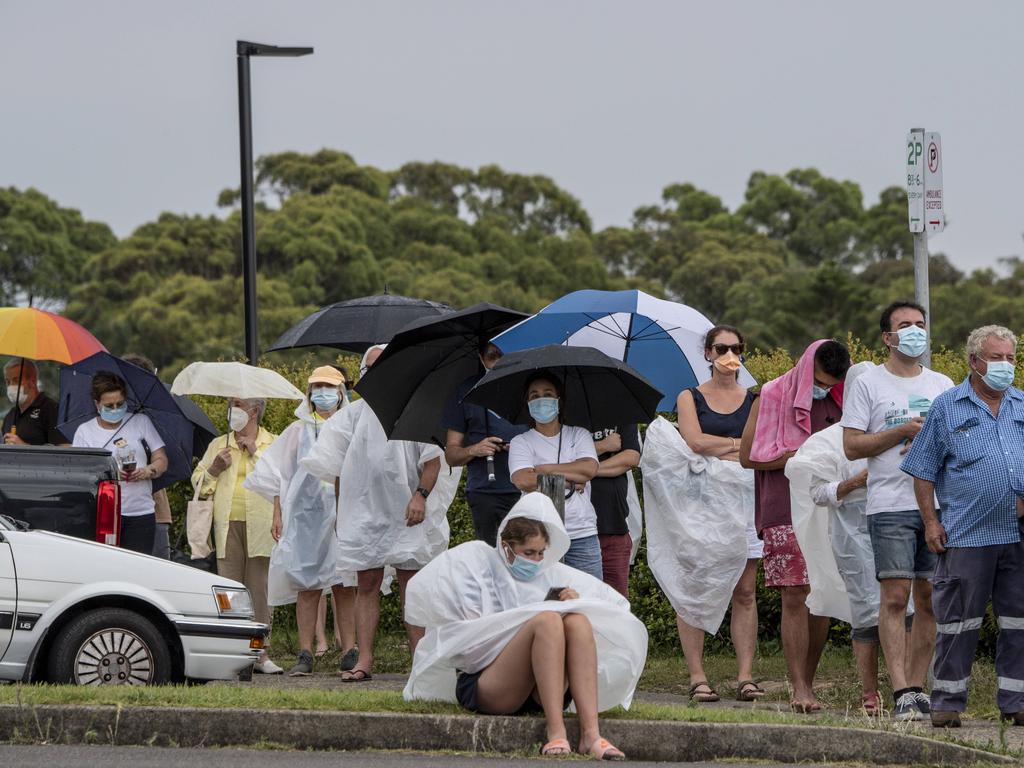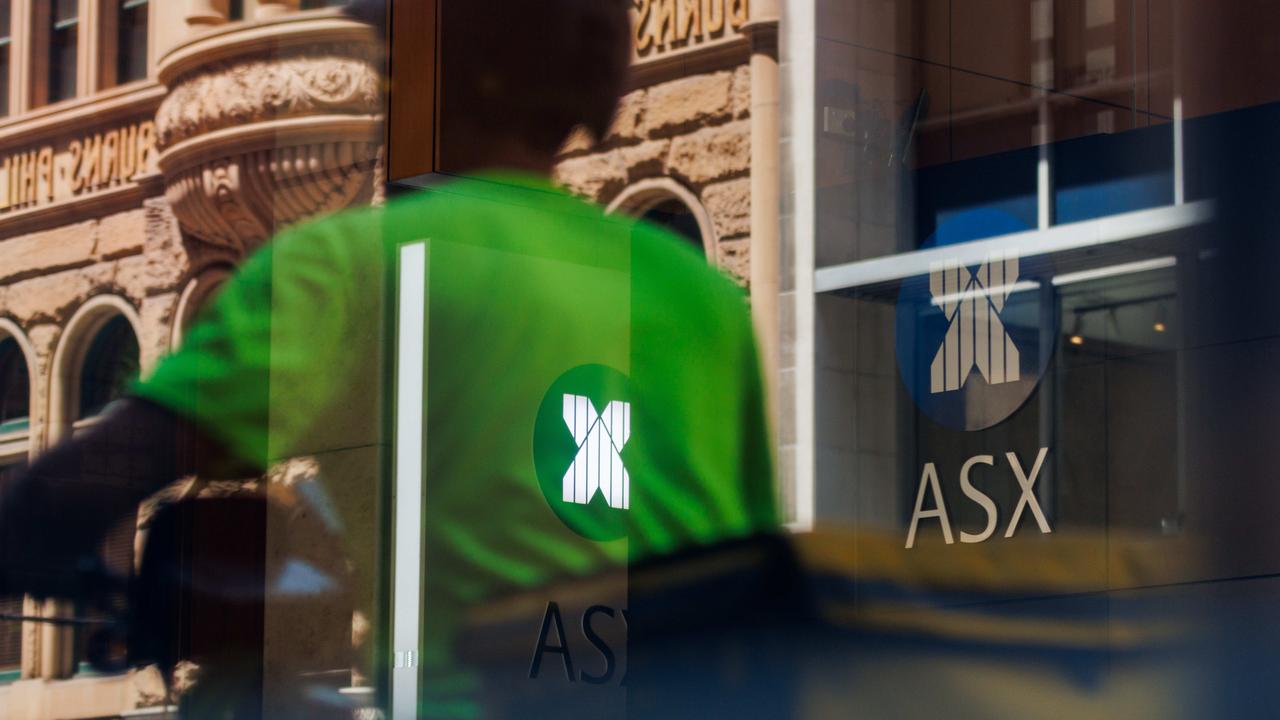National Australia Bank chief executive Ross McEwan’s year of banking differently
NAB boss Ross McEwan is optimistic about the future as the economy snaps back strongly and the bank’s transformation continues.

For career bankers like NAB chief executive Ross McEwan, 2020 has been a year like no other, as industry practices refined over centuries — like charging interest on borrowed money — were temporarily discarded for the common good.
On his daily commute to an empty Docklands office tower, McEwan would scan the ghost city of Melbourne, his innate feel for the source of productive activity rendered obsolete.
On arrival at 700 Bourke Street, he would waive repayments on $60bn of loans and dispense cash grants to 5000 local businesses, including those that banked elsewhere, knowing that thousands of his colleagues would one day require nourishment — and more importantly coffee — once they returned to the office.
McEwan is now treated like royalty by the cafe and restaurant owners, who accepted $5000 grants if they were NAB customers and $2000-$3000 if their accounts were held by rivals. “In Sydney,” he responds with a sheepish grin, when asked boisterously by a cafe owner where he’d been for the past week or so.
The truth is that the once-bustling concourse area outside the NAB tower, which abuts the AFL venue Marvel Stadium, remains desolate and windswept.
You almost expect a bunch of tumbleweeds to roll by.
Before McEwan appears, a determined but confused middle-aged man stops for a chat, demanding to speak to a bank chief executive about the closed branch nearby. If he’d persisted for a few more minutes, his earnest wish would have been granted.
The exchange is symptomatic of an economy still clawing its way back to a forgotten equilibrium.
Despite this, McEwan’s spirits have been lifted by the pace of economic recovery and NAB’s continuing transformation, and he ventures that the bank is in a “very, very strong financial position for the first time maybe in decades”.
“We’ve got a good level of capital, great liquidity, and we’ve taken additional provisions which make us one of the best provisioned banks,” he tells The Weekend Australian.
“At no stage do I want any hubris, but over time we’ll see confidence return to this bank, just a little bit more confidence that we’re on the right path, and I think I’ve started to see that now.”
The assessment falls well short of hubris, and rightly so because NAB has made an art form of stumbling over its own premature claims that a return to greatness is just around the corner.
The scale of NAB’s self-delusion was highlighted last October when UBS tallied up the bank’s extraordinary record of large one-off losses dating back to 1998.
The total came to $20bn, or 15 per cent of all profit generated by NAB over the past 22 years — well over double the combined one-offs for the other three major banks.
McEwan is well aware of the bank’s history, but reinforces the point.
“I’m confident about the way things are looking,” he says.
“I’m confident that the bank is in a strong position to take whatever is thrown at it.”
At Friday’s annual meeting, chairman Phil Chronican boasted that, for the first time in 12 years NAB’s market capitalisation placed it second behind Commonwealth Bank among its major-bank peers and fourth on the ASX.
While headwinds remained, Chronican said there was good underlying momentum.
For McEwan, the most concerning moment in the pandemic crisis came right at the outset, when a wave of Melbourne businesses shut their doors because they had no customers.
The NAB chief had never seen anything like it in his long professional career but the implications were obvious.
Official data showed that 900,000 jobs, or 7.3 per cent of the workforce, disappeared between mid-March and the start of May.
It was a wake-up moment for the entire country because the scale of the job-shedding far exceeded the 2008-09 crisis.
“I thought what was unfolding was dramatic, and it was one of the key reasons why I went and got more capital for the bank,” McEwan says.
“We were fine on a capital level but I felt we might need more to be safe and secure and support our customers.”
NAB went early and went hard, announcing a $3bn institutional raising and a $500m share purchase plan targeting retail investors.
After the horrendous employment figures in mid-May, McEwan upped the SPP by $750m to $1.25bn, lifting the bank’s common equity tier one ratio from 10.4 per cent to almost 11.5 per cent by the close of its financial year on September 30.
Thankfully, by the time of NAB’s capital raising, the Morrison government had started to dial up a torrent of assistance packages, mainly the JobKeeper and JobSeeker programs.
By early November, an astonishing $257bn, or 13 per cent of GDP, had been provided in direct economic support, more than double the economic stimulus of 6 per cent of GDP in the financial crisis.
Added to that, there was about $260bn in home and business loans on deferral at the May peak, and various programs put in place by the Reserve Bank to ensure liquidity was adequate, bank funding costs remained low and markets overall were stable.
The great gush of money, however, could not prevent the nation sliding into recession, after a record 7 per cent GDP contraction in the June quarter.
While the collapse was breathtaking in its ferocity, history will show that the seeds of recovery had already been sowed.
For McEwan, the critical factor was the level of co-operation between the government, financial regulators and the banks.
“The RBA made cash available through the term funding scheme, the government stepped in with support for those who had lost their jobs to keep them connected to their employer, which I think was a very good strategy, and industry came through with the loan deferral programs,” he says.
“The pace at which everyone worked together to get the job done was outstanding, but there was plenty of money in the system and individuals hadn’t strained their balance sheets at home.
“So I think it enabled us to come out of this much faster.”
While the level of economic support was unprecedented, the truth is it was put together without any firm conviction that it would be sufficient to pull the economy back from the brink.
The event had no precedent so optimism was misplaced, but for one salient lesson. If you look at the history of major economic shocks, only a fool would bet against the Australian economy outperforming most other developed markets in recovery phase.
For McEwan, it’s a reflection of a young economy which continues to spend on infrastructure to support population growth.
There was also our natural resources wealth, and our ability to deftly handle the health and economic impacts of a pandemic.
“There’s been a massive snap back, and it feels as though it’s sustainable,” he says.





